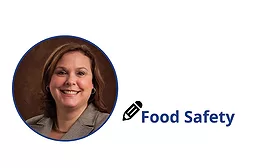Home » Keywords: » employee training
Items Tagged with 'employee training'
ARTICLES
Building a Skilled and Capable Workforce in the Food Industry
To break the cycle of superficial compliance and truly protect consumers, the food industry must undergo a shift in mindset
February 12, 2025
Supplier's Perspective
Food processing plant sanitation: Counting on shift zero preparation
June 13, 2017
Never miss the latest news and trends driving the food safety industry
eNewsletter | Website | eMagazine
JOIN TODAY!Copyright ©2025. All Rights Reserved BNP Media.
Design, CMS, Hosting & Web Development :: ePublishing




